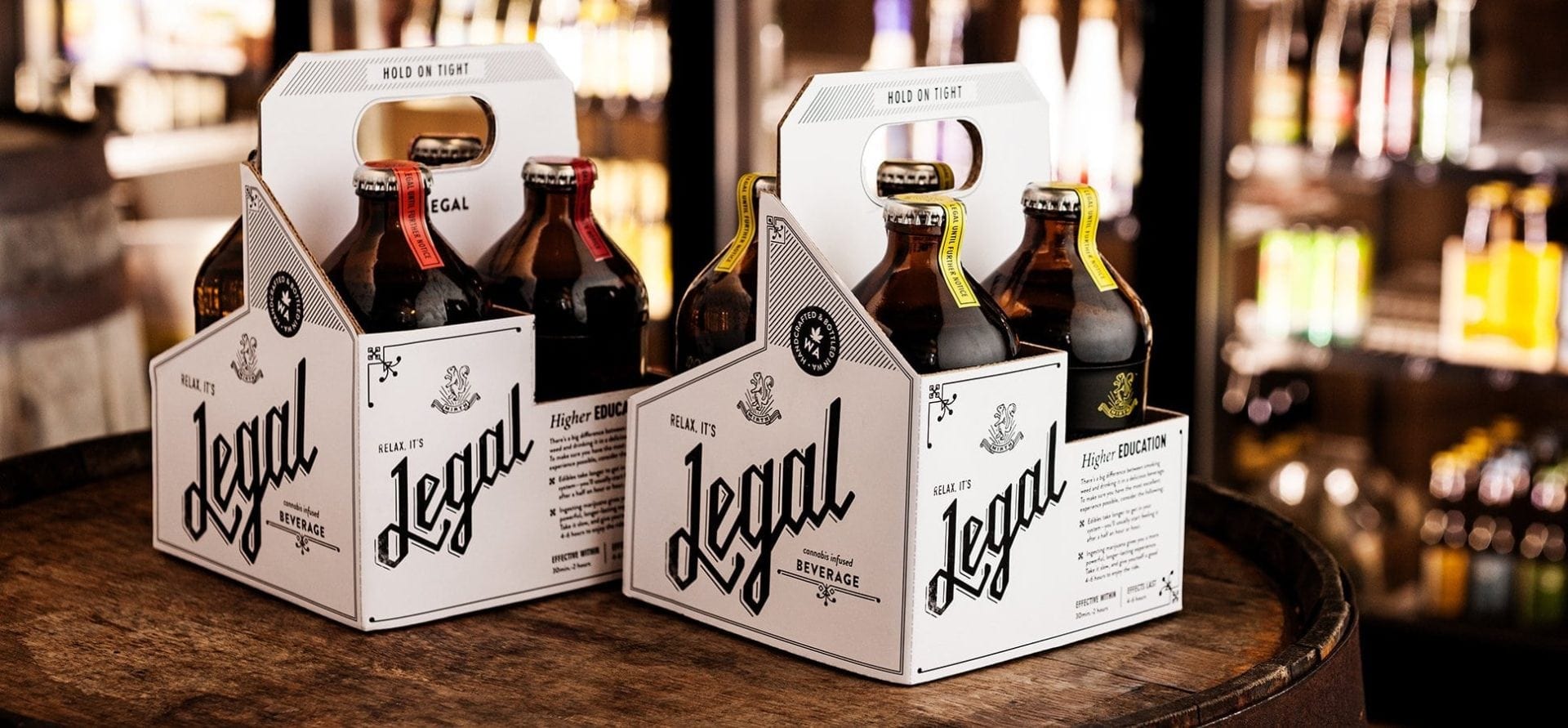By Jonathan Bloom
For thousands of years, humans have consumed alcohol by drinking it, and cannabis by smoking it.
It was just the natural order of things — until now.
At a bustling conference center in South San Francisco, more than 1,000 people packed an exhibit hall to see the beverage industry’s big new breakthrough: cannabis you can drink. It’s a hard-won victory for science that’s poised to spawn a whole new category of products.
“If you go back a few years, THC drinks were a little like salad dressing. They had to be shaken, and a lot of them didn’t taste or smell that good,” said Rick Gillis, president of Tinley Beverage Co.‘s North American business. “But thanks to nanotechnology — and this has only happened in the last couple of years — the THC molecule can be solubilized so it can suspend beautifully in the liquid.”
Gillis, whose company just launched a line of alcohol-free THC drinks that resemble cocktails and spirits, recalls that the “dark” ages of cannabis drinks arose out of a simple truth: oil and water don’t mix.
Cannabinoids like THC and CBD are lipids — fat molecules, like those found in butter and chocolate. It’s one reason brownies and candy bars were among the first commercially successful cannabis edibles: weed mixes well with chocolate. Water, on the other hand, isn’t such a natural fit.
“Our first beverage, you could turn it upside down and you’d see that cannabis go up and down,” said Kim Stolz, marketing manager for Keef Brands, which makes cannabis-infused root beer and cola.
Now, Stolz says, every sip of Keef’s sodas contains the same amount of THC, thanks to a new process that’s sweeping the industry.
“Lipids cannot dissolve in water. But what you can do is coat them in a surfactant and then enable them to be water-compatible,” explained Taieesa Peshkovsky, a food science intern who was demonstrating equipment made by Industrial Sonomechanics.
The Miami-based company makes a device that shoots sound waves through cannabis oil — which is nearly solid at room temperature — to get the molecules to move apart and mix with other ingredients that are lighter and more slippery. When added to water, microscopic droplets of the resulting mixture can stay suspended, instead of sinking to the bottom.
“We’ve solved it. I feel very confident saying that,” said Steph Tripp of Stillwater Ingredients, a company that rebranded itself as Caliper Commercial Ingredients in the days after our interview.
Caliper makes manufacturing-scale batches of the mixture that lets hemp-derived CBD suspend in new drinks that are increasingly showing up at gyms and health food stores. As of late 2018, CBD that’s extracted from hemp is legal to sell in all 50 states.
Guardian markets a sports drink infused with CBD that aims to give athletes a healthy way to hydrate, with a little something extra. Without THC, the psychoactive molecule in cannabis, Guardian’s drinks can be sold in more places. The company intends to reach health-conscious consumers who are more interested in cannabis for wellness than as a way to get high.
“So we wanted to go all organic, no refined sugar,” Gouldman explained.
Guardian’s target customers are likely similar to the ones Eat Green LA is trying to reach with its cold-pressed, cannabis-infused juices.
“People come to cannabis to help them with their health. I don’t want to give someone diabetes while trying to help them combat Alzheimer’s,” said co-founder Tea Vickers.
Eat Green offers its drinks in both THC and non-THC versions, with the former sold only at cannabis dispensaries. There are plenty of other restrictions around the inclusion of THC in beverages, but the biggest one is this: A drink sold with THC in it cannot also contain alcohol.
“Alcohol, when you drink too much of it, you’re supposed to throw up,” Vickers explained. “That’s what stops you from being poisoned. And THC and CBD literally stop you from throwing up.”
It’s the ultimate irony, since stopping nausea was a major reason cannabis was legalized in the first place, for medical use. It was heralded as a way to help people suffering from AIDS keep food down, and mitigate the side effects of chemotherapy for those battling cancer.
Now, in states where it’s recreationally legal, companies like Keef are pitching cannabis drinks as a way to enjoy a different kind of buzz while hanging out with friends who are drinking alcohol. Unlike solid cannabis edibles, a THC drink can be absorbed quickly by the body, and can start having an effect within 15 minutes or less.
“Drinking alcohol has been around forever, and it’s so familiar to everybody,” Stolz said. “Why shouldn’t drinking cannabis be just the same?”
Read more from the source: NBCBayArea.com







